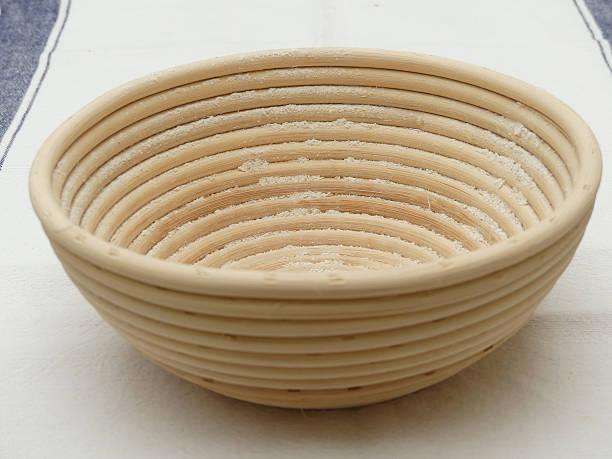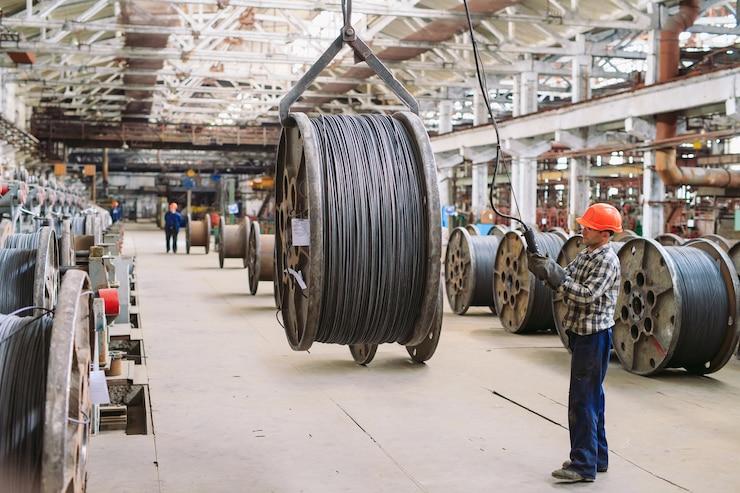The Real Baker’s Guide: Why Using Proofing Baskets Changes Everything

Every baker’s got their little rituals. Some folks swear by the humidity in their kitchen. Others blame the yeast. But here’s the truth—most home bakers mess up the proofing stage. Not because they can’t bake, but because they skip the tools that pros rely on. Proofing baskets aren’t just props you see on some fancy baking YouTube channel. They’re the backbone of bread structure. They help your dough rise right, breathe, and hold its shape instead of collapsing into a sad pancake. When I started using proofing baskets, my loaves finally looked like the ones I’d been drooling over online. It’s not magic—it’s control.
Why Proofing Matters More Than You Think
You can knead all day and still end up with flat, dense bread if your dough doesn’t proof right. Proofing isn’t just letting it “sit around.” It’s controlled fermentation. It’s where the dough builds its personality—the flavor, the air pockets, the crust tension. Using proofing baskets gives your dough a home while it develops. The coiled rattan surface keeps the air moving, wicks away excess moisture, and leaves those beautiful swirl patterns. That rustic artisan look? Yeah, that’s not Photoshop. That’s a banneton doing its job. So if your bread’s been slumping or baking unevenly, the culprit’s probably not your recipe—it’s your setup.
The Difference Between “Okay” Bread and “Damn, That’s Good” Bread
There’s bread that feeds you, and then there’s bread that makes people talk. The difference often sits right in that proofing basket. Without structure, dough spreads flat, killing the oven spring. With it, your loaf climbs, browns, and crackles the way real bread should. You can see it in the crumb—those irregular, chewy pockets that catch butter like tiny traps. Using proofing baskets also helps you stay consistent. Every loaf proofed in the same size and shape means you’re not guessing anymore. It’s repeatable success. And in baking, that’s everything.

Picking the Right Proofing Basket
Not all baskets are equal. You’ve got round bannetons, oval ones, and even linen-lined baskets for wetter doughs. If you’re serious about learning the craft, start with a medium round rattan one—it’s versatile and easy to clean. The texture matters too. Natural rattan gives better airflow and shape retention. Plastic knockoffs? They trap moisture, making your dough stick. And you don’t want to fight sticky dough at 6 a.m., trust me. A good proofing basket should feel solid, breathable, and slightly rough to the touch. Like it’s been around for generations, even if it’s brand new.
Dusting: The Tiny Step That Saves You Big Trouble
Here’s a mistake I made early on—forgetting to flour the basket. Yeah, rookie move. You’ll end up peeling sticky dough out like pulling gum off your shoe. Lightly dusting your proofing basket with rice flour or a rice–all-purpose blend keeps your dough from clinging to the surface. Don’t overdo it, though. Too much and you’ll have white crust patches. Just enough to coat the inside, swirl it around, and tap the excess. It’s a simple, almost meditative step, but it’ll save you frustration later. A few seconds of dusting for a perfect release—it’s worth it.
How Proofing Baskets Help You Read the Dough
Every baker talks about “feel.” Dough that’s ready has a spring, a little bounce when you poke it. But using proofing baskets gives you a clearer signal. As your dough expands in a fixed shape, you’ll notice the rise levels and tension easier. The walls of the basket give a reference point—when the dough reaches just under the rim, it’s about ready. No more guessing. You start to read your dough like a language—soft but firm, alive but settled. It’s one of those tactile lessons that no recipe or app can teach you.
Bread Baker Supplies You Actually Need
People think baking means buying everything under the sun. Nope. Keep it simple but solid. You’ll want a proofing basket, a good bench scraper, a dough whisk, and a sharp lame for scoring. Add a kitchen scale (don’t skip that), and maybe a dough scraper if you’re working with sticky sourdough. That’s your foundation. Bread baker supplies aren’t about quantity—they’re about quality. Each tool gives you precision and control. Once you’ve got the essentials, you can stop chasing gadgets and focus on mastering the process. Because that’s where the real progress happens.
The Connection Between Proofing and Crust
You ever wonder why bakery loaves have that deep, golden crackle? It’s not just oven heat. It’s how the dough proofed. A well-proofed loaf holds internal steam, creating a natural blistering effect during baking. Proofing baskets help regulate that final fermentation so you don’t overproof (which kills the oven rise) or underproof (which tightens the crumb). The result? Balanced hydration and tension—exactly what you need for that crispy crust that snaps when you slice it. If you’ve been missing that texture, fix your proofing. Your oven will thank you.

Cleaning and Caring for Proofing Baskets
Don’t wash your proofing baskets like dishes. Seriously, don’t. Water ruins the rattan and invites mold. Just tap out leftover flour, brush it off, and let it air dry completely before storing. If you accidentally get dough stuck, use a stiff dry brush once it hardens. Over time, your basket develops a natural flour “seasoning.” That’s a good thing. It means your dough will release easier next time. Think of it like a cast-iron pan—the older it gets, the better it performs. A little care goes a long way here.
The Emotional Side of Bread Baking
There’s something grounding about bread. You mix, you wait, you shape. You trust. And that’s where tools like proofing baskets quietly support you—they take out some of the chaos. They give your dough boundaries while you handle the patience part. The smell of proofing dough in the morning, the sight of a perfectly risen loaf… it’s hard to explain, but it feels like you’ve done something real. Bread isn’t just food—it’s proof (no pun intended) that time and care still matter. You can taste that.
When to Proof and When to Bake
Timing’s everything. Too long in the basket, and your dough collapses. Too short, and it bursts in the oven. You’re looking for that “sweet spot”—slightly domed, airy, with just a bit of resistance when you poke it. Using proofing baskets helps because you see those changes happen right in front of you. Once you nail your proofing timing, baking becomes easier. It’s no longer guessing—it’s rhythm. That’s the real magic of bread baking. It’s not precision science, it’s more like learning a song by heart.
Bring It All Together (And Why Abioto Baking Matters)
If you’ve made it this far, you get it—using proofing baskets isn’t optional if you want great bread. They’re essential, like a compass for your dough. Pair them with the right bread baker supplies and suddenly your kitchen feels like a small bakery. The crust, the crumb, the confidence—it all starts here. Whether you’re shaping your first loaf or refining your sourdough game, the tools you use shape the results. If you’re ready to level up your baking gear, don’t waste time hunting all over. Visit Abioto Baking—they’ve got everything from professional proofing baskets to starter kits that make real difference. Start where great bread begins.

FAQs: Proofing Baskets and Bread Baker Supplies
Q1: What’s the best type of proofing basket for beginners?
Start with a medium-sized round rattan basket. It’s easy to use and perfect for most bread shapes.
Q2: Can I proof dough without a basket?
Sure, but it won’t hold shape as well. Your dough may spread flat instead of rising tall.
Q3: How do I clean my proofing basket safely?
Brush out leftover flour, never wash with water. Let it air dry before storing.
Q4: Do I need to use a liner in my basket?
Liners are great for very sticky doughs or if you want a smoother finish on the crust.
Q5: What basic bread baker supplies should every home baker own?
A proofing basket, bench scraper, kitchen scale, dough whisk, and a scoring lame. That’s your core kit.
Q6: Why is rice flour used in proofing baskets?
Rice flour doesn’t absorb as much moisture as wheat flour, so dough sticks less.
Q7: How long should I proof my dough in the basket?
Depends on temperature and dough type. Usually between 1–4 hours for final proof.
Q8: What’s the difference between a banneton and a proofing basket?
They’re the same thing. “Banneton” is just the French word for it.
Q9: Can I use a proofing basket for cold fermentation?
Absolutely. Just cover it well and refrigerate the dough in the basket overnight.
Q10: Where can I buy quality proofing baskets and bread baker supplies?
Right at Abioto Baking—your one-stop shop for authentic bread-making gear.








